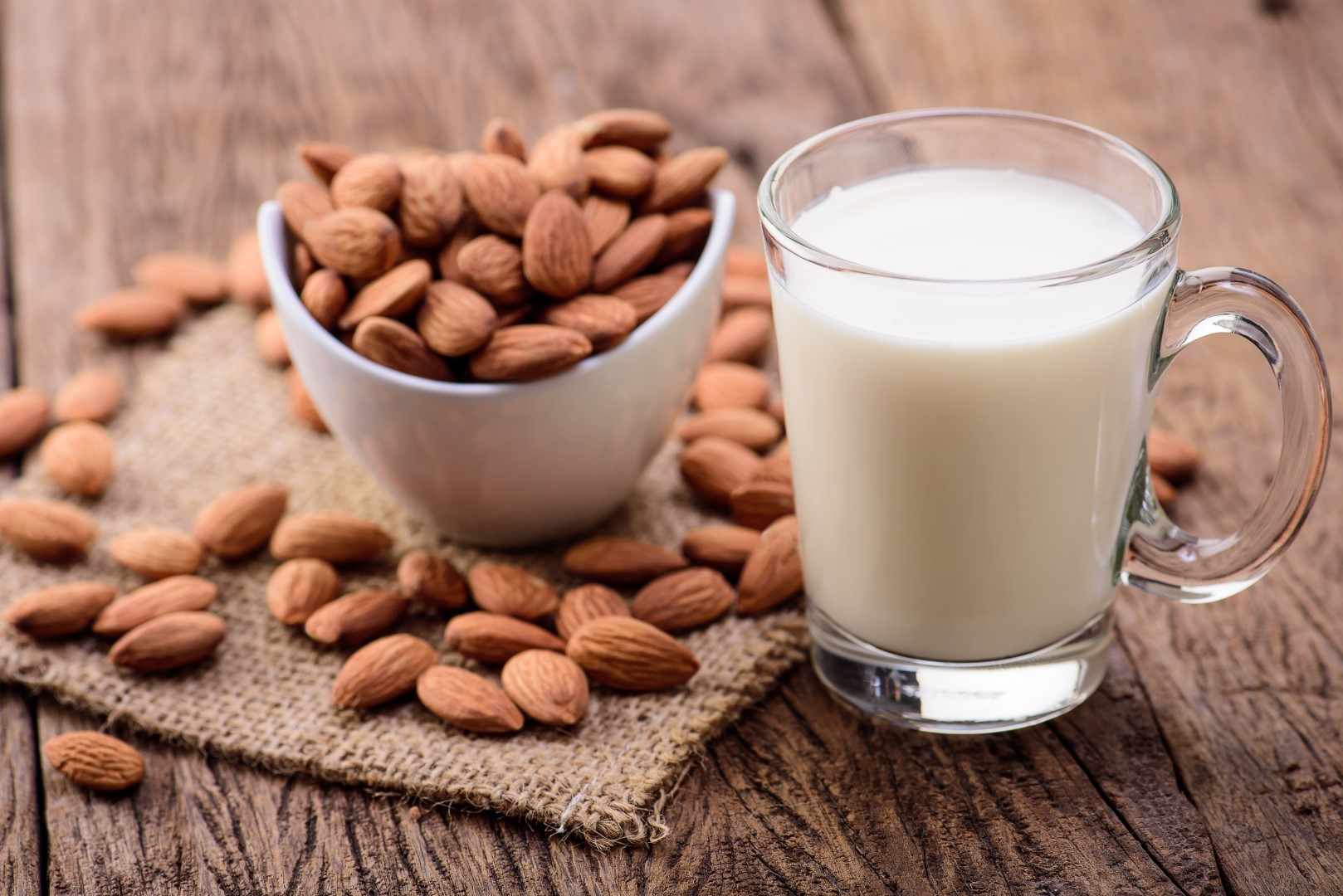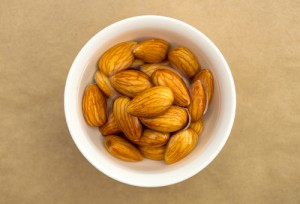Almond Milk Showdown

In attempting to classify the good, bad and ugly commercial almond milks (see video presentation HERE) I continued to come across the same ingredients. Some are the old villains, your basic sugar and carrageenan but there were several others that continued to show themselves on the ingredient lists. Over and over I was reading gellan gum, algal flour, locust bean gum, tricalcium phosphate and more. The following is the lowdown on those ingredients. I suppose there is no perfect anything in the world but while we’re being pragmatic it is great to be informed about the ingredients that we are compromising on and choose the best alternatives possible.
Without further ado and in alphabetical order 🙂 :
Algal Flour – This ingredient has the potential to actually be not bad at all. When I first read this on package ingredients I just figured it was a new fancy term for basically carrageenan. This is not the case. There are two types of algal flour that seem to be the most commonly in use, one that is high in fats and one that is highest in proteins. The protein based algal flour utilizes both microalgae and fermentation to create their product. The higher protein algal flours have a good amount of 19 different amino acids, especially high in glutamic acid which is of interest to many people working on their digestive health. The lipid profile for the higher-fat algal flours seems highest in Oleic Acid, Linoleic Acid and Palmitic Acid. I am seeing this ingredient in foods where manufacturers are looking to replace animal fats or the taste of animal fats. So I am still not totally sure about the manufacturing process of any of these algal flours, even just the basic question of how do they make them not green and taste like spirulina?? I am also not sure of the impact on human health as these are relatively new ingredients.
Cane Sugar – Cane sugar, maple sugar, agave (admittedly in its own class), any of these sweeteners come with their own risks over time and depending on your blood sugar metabolism this will have to be something you choose. Now that there are unsweetened varieties of most of these milks we do have options. I know that the sugars that are added to non-dairy milks are used to approximate the sweetness of milk from any mammal but arguably we are not cows and we are (in body) adults so I’m not sure as to the wisdom of continuing to mimic a taste that may not be age or species-appropriate. That being said I’m not sure xylitol or erythritol or stevia are necessarily better options. This would be a good one for the comments below. This one’s up to you!
Carrageenan – This ingredient probably still is in many almond milks but I’m happy to say that it wasn’t in any of the milks that I found at Whole Foods on this particular expedition. While I am a proponent of including sea vegetables in a healthy diet I cannot stand behind this single extracted ingredient that has been shown to both increase gut permeability and contribute to colon cancer risk factors.
Gellan Gum – Relatively new on the scene, gellan gum lacks sufficient study for me to be convinced of its safety over time. One study published in the J Nutr Sci Vitaminol (Tokyo) in 1997 showed damage to rats’ microvilli after ingestion over a period of time. I think for anyone who already has digestive issues this ingredient may be one to avoid.
Calcium Carbonate – It seems like this ingredient is here for our benefit but as a food manufacturer I must say that it likely is not. Adding calcium carbonate is the cheapest way to make the nutrition “facts” look awesome. It is a good way to say “contains 50% more calcium than dairy milk” but first of all let’s look at absorption: Many studies that find calcium and D supplementation to be helpful for bone health do not specify the types of calcium used and a number of studies have found calcium carbonate supplementation ineffective. Studies have, however, shown supplementation with other forms of calcium such as calcium citrate and calcium bisglycinate to be better absorbed and more effective. Yet other studies have shown the opposite to be true (http://www.ncbi.nlm.nih.gov/pmc/articles/PMC3999951/) Most of the studies on calcium supplementation and cardiovascular risk have so so so many variables like lifestyle, exercise, other dietary factors and more. In conclusion I’m not convinced calcium carbonate helps our bones or presents a cardiovascular risk. I usually choose to avoid it.

Guar Gum – This ingredient is actually made from a food, from a bean that is actually edible. This is good news. Some side effects of taking this ingredient in excess include gas and bloating. I would personally watch out for this one if I was experiencing any sort of intestinal imbalance. That being said I like it better than xanthan gum and gellan gum.
Locust Bean Gum – This gum is made from the seeds/beans of the carob plant. It may be listed as carob bean gum. Similar to guar gum, a side effect of taking this in excess can be too much gas/bloating. It may well feed some of our bacteria that would be better unfed depending on the person. It takes an imbalance to feed an imbalance.
Potassium Citrate – I believe this is added as a pH buffer. This ingredient is also often supplemented. It is a uric alkalizer (makes urine more alkaline).
Tricalcium Phosphate – This ingredient is tiny reflective particles that make products look white. They are small and can do damage to the digestive lining. Let’s all write to or visit Whole Foods and ask them to take this ingredient out of their 365 brand almond milk.
Vitamin A Palmitate – This may involve palm oil so may be of ethical concern rather than a health risk.
Vitamin D2 – We don’t need D2. We need D3. Vegan D3 is now available for being added to products. D2 is cheaper. ‘Nuff said.
While some of the above ingredients are not terrible, almond milk is something that many of us drink on a daily basis so even at values “less than 2%” there is very little that we get a free pass on eating regularly. Even if the ingredients listed here are not harmful it is important to know that they are not there for your benefit or your health. Ingredients are often included to make products look whiter, brighter, stay fresh longer or have a thicker consistency.
The companies that make these milks must first and foremost be businesses and make a profit in order to survive and continue to grow. The bottom line is that they need to sell us something that we will buy. Our choices have already changed the marketplace. Our choices change everything. Let’s do the best that we can.
Check out this weeks’ Bone Builder Nut and Seed Milk Recipe HERE







Thanks for doing the research and sharing. Very helpful information!
hey thanks Caroleah! I hope you are doing well 🙂
Steph, this information is wonderful. Thank you for keeping us up to date. It is so important to know how to read labels.
Thanks Barbara! I know you were mentioning some other brands the other day. What are YOUR favourites that you can get in Ontario?
Thanks for the helpful info.
Thank you Avis 🙂